Book illustration is something in between fine and applied arts: self expression and unique perception of the topic is very important. On the other hand, everyday life of an illustrator is not a constant participation in exhibitions but rather commissions. Best case scenario, it’s a project where you don’t feel like a puppet, forced to do draining and unsatisfying work for pennies.
It’s very thrilling (in a good sense) to receive an email which invites you to draw for a company/initiative/project that you admire and won’t even mind to work faster on it than usual. But how do you create a drawing from nothing, when you need too produce many illustrations and not much time is given? What usually helps me, is having a plan and dividing the whole project into smaller parts. So now I am sharing my experience about the process of illustrating the book “The Kid’s of the 90’s Become Parents” written by Veronika Urbonaitė – Barkauskienė . Disclaimer: this method is just my personal routine – not an universal recipe. Looking back to the time, when I worked on this project I would section the whole process in these stages:
Illustrator Ūla Šveikauskaitė (photo by Dainius Labutis for the magazine “Moteris”) and the book “The Kid’s of the 90’s Become Parents” (photo by Dovaldė Butėnaitė)
Understanding the needs and expectations of the author, publisher and designer and agreeing on working conditions
Even though illustration is very connected with personal style, it’s a discipline of applied arts. That’s why it’s crucial to take your team’s wishes into account. It’s not an author book, it’s a commissioned work. I listen carefully to what is the vision of the book according to the author and the publishing house. I also try to understand designer’s visual conception. I formulate where I can do compromises with myself and where not. What expectations do I have for myself, does the idea of the book clash with my personal style, working ethics, values? Is the payment satisfactory? These things need to be talked through in the very beginning, because after the agreement is sealed there is not much space for negotiation about the working conditions. Everything needs to be secured by a contract, because it guarantees the safety and clear borders for both parties. In this particular project I was lucky to work with a fair client. Moreover, I’ve got quite a lot of artistic freedom.
Reading the whole book
While reading I make notes in my notebook about visual or inspiring parts of the text, where illustrations would be suitable. I write down quotes, keywords, ideas. It’s important to think about the book’s structure – if most illustrations would be placed in the beginning of the book, while the text followed after, the result would be very inconvenient and inconsistent. I write down all the chapters and consider where to insert an image. Preferably all this thought process happens in cozy and inspiring surroundings (such as a calm cafe).
The research
In this case the book is about the children on the 90’s and their struggles today as parents. This means that hints of the 90’s nostalgia should be incorporated into illustrations, as well as the symbols of this particular generation (like soviet playgrounds, “Spice Girls”, neon colours, endless playing with friends on a pavement etc.) and the topic of parenthood. So I sit and google. Keywords: vapour wave, cyberpunk, 90’s, aesthetics, 90’s in Lithuania and so on. Searching patiently and gathering all the material into folders on my computer.
Illustrations by Ūla Šveikauskaitė for the book “The Kid’s of the 90’s Become Parents” (photos by Dovaldė Butėnaitė)
Sketches (at first with pen and paper)
In the beginning I just do some little scribbles not focusing on the end result, but rather on inspiring objects or details, which might be used in the final illustration. When I have an image in my head, I quickly sketch the basic structure of the scene in a small format not thinking about the details. When I am done with the sketching, I continue to draw digitally (in this case I drew with an iPad using Adobe Sketch and Adobe Photoshop).
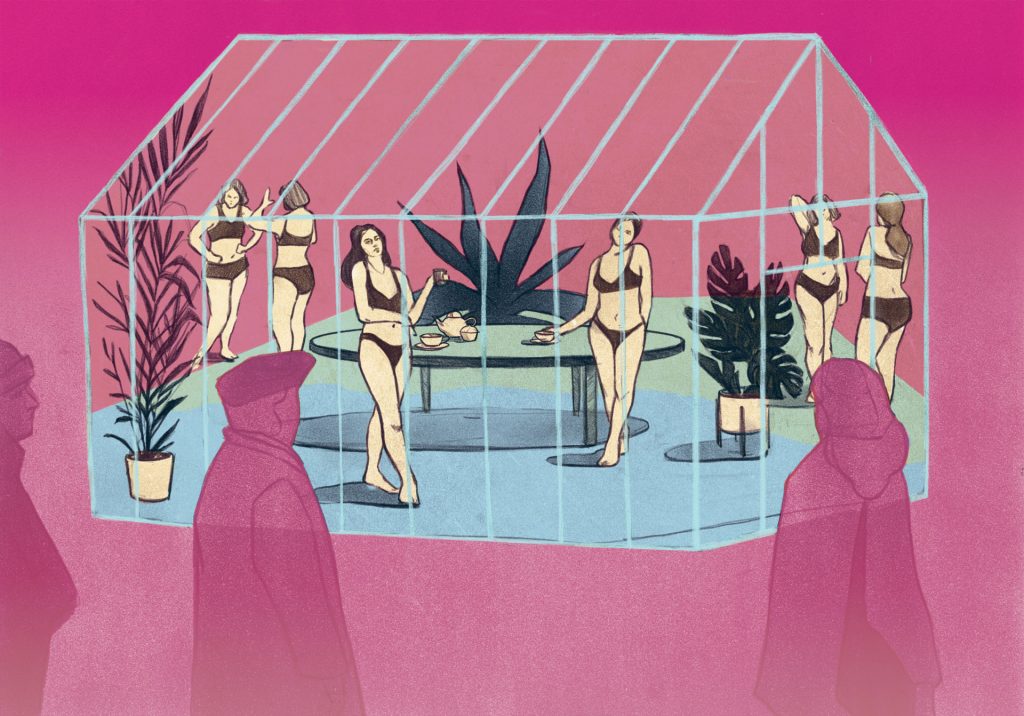
References
Besides the associative images about the 90’s in Lithuania, I also needed some examples of composition elements. I don’t know how do fellow illustrators deal with drawing hands, but for me sketching them from my memory is close to impossible. Usually, I need some kind of reference. It could be a photo of my friend’s hands or an image from Shutterstock. Nevertheless, it’s important not to rely on examples too much because: 1) it’s not an academical drawing, 2) if the image is redrawn from the internet, there is a big chance that it has been seen 100 times before and will be recognised in the composition. However, there is no shame in taking a look at a particular photograph to understand how to draw a specific pose of a person or how to depict a certain object. Feel free to surf the net and check images that help to imagine elements of compositions better, observe your surroundings, make photos and putt everything in the “references” folder.
Coming back to the research of a topic from time to time
It’s a good idea to observe certain codes or objects mentioned in the book that can bee seen in your surroundings, listen to the music of that specific time, talk to people who were teenagers in the 90’s and ask about their experiences, check some niche “vapor wave” websites and so on. Try to immerse yourself into the atmosphere and the mood of the book. When I had zero motivation to illustrate, I went to draw in the 90’s flair cafe and listened to a vapour wave album “Macintosch Plus – Floral Shoppe”. It helped.
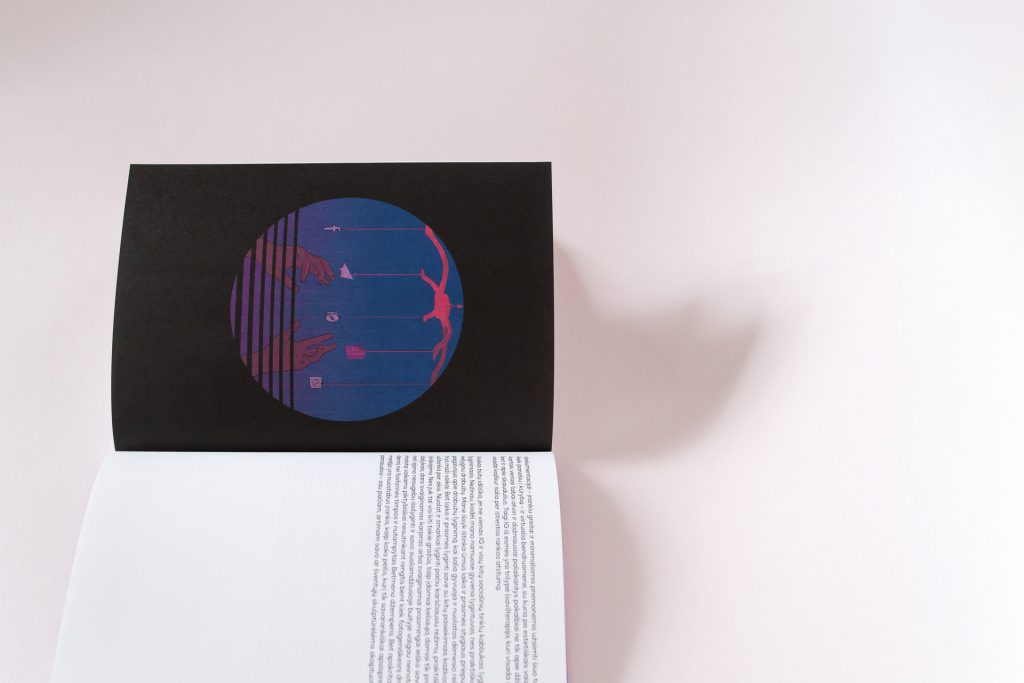
Sketches for the client
Usually there is a deadline for sketches, so that the client won’t have to face unpleasant surprises when the final images are sent. Sketches should be understandable, have a basic composition, idea and colour palette. Yet you shouldn’t put too much time into sketches, because if they get rejected, you would loose time. When a deadline is strict time is precious. I send decent looking, freehand sketches and wait for the feedback.
Even though I saw my drawings hundreds of times, nothing compares to the feeling of seeing printed illustrations and knowing that they will be passed through the hands of many people
Final illustrations
When the sketches are accepted 60 percent of the work is done. Now I need to refine compositions by erasing unnecessary lines and strokes, fix some imperfections, add textures, grain and ornaments. Then I focus on drawing people, objects and surroundings more accurately, play with colours and tones, etc. I think about elements that I want to accentuate and what should go into the background. I consider whether some objects are not needed in the composition at all. When I was finally satisfied with the drawings, I sent a preview to the designer, the publisher and the author. When I received their blessing it was time to prepare the images for printing, which can be a real headache sometimes. After I checked if everything was fine with the colour conversion, I sent the final files to the designer and when there was nothing else to fix, I went to celebrate.
Illustrations by Ūla Šveikauskaitė
After all this work, I couldn’t wait wait until the book was finally published. I waited impatiently. Even though I saw my drawings hundreds of times, nothing compares to the feeling of seeing printed illustrations and knowing that they will be passed through the hands of many people. Due to the quarantine situation, the book was published in quite unusual conditions: it got stuck in the storage room of the printing house and couldn’t be distributed to the bookshops for some time. Despite all of that, people could still order the book online and I myself got it via post to Vienna (the place I am living in at the moment). The feeling of the texture of the paper and seeing my work embodied in those pages made all my worries and effort worth it. If you are curious to see “The Kids of the 90’s Become Parents” for yourself, you can find the book in Lithuanian bookshops or order it online.
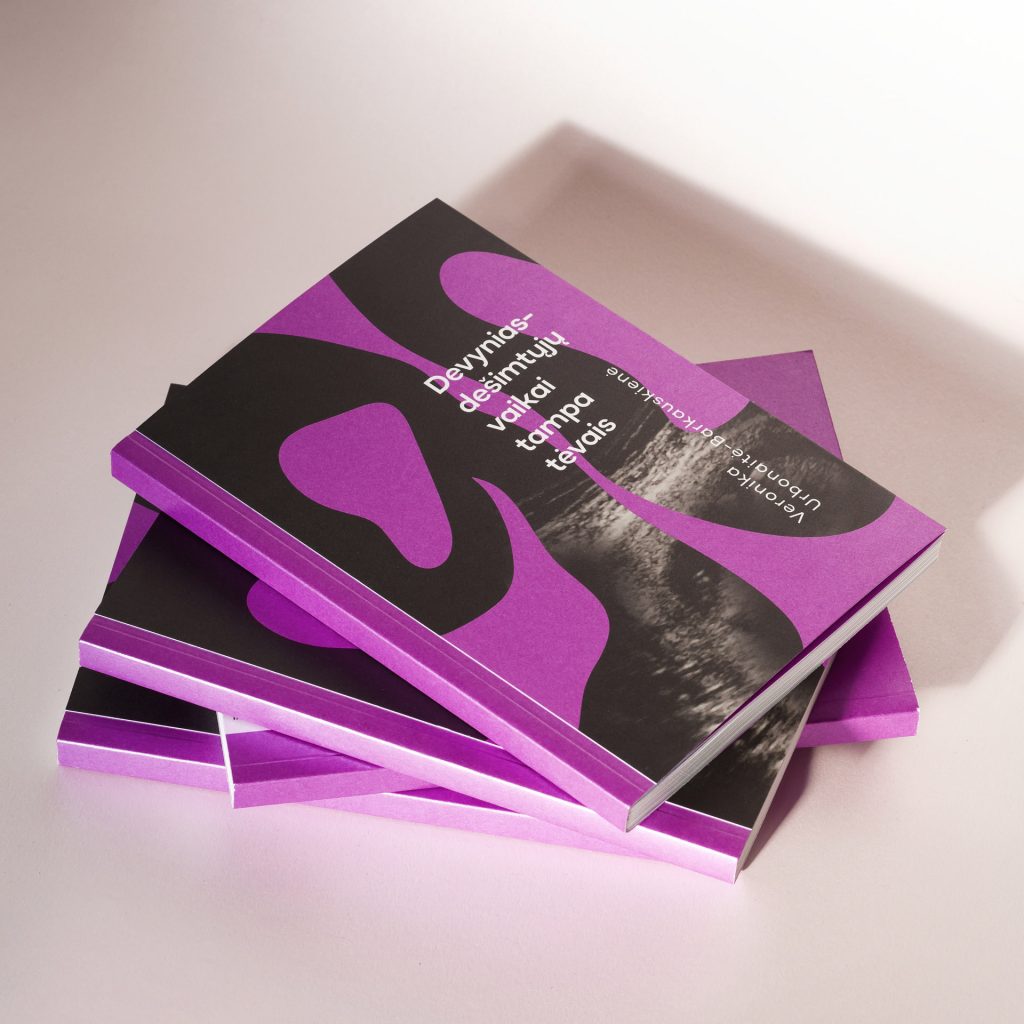
Visit Ūla Šveikauskaitė’s page and Instagram.
To learn more about the activities of Kurk Kurk, read our blog articles. We also invite you to follow our page and like us on Facebook and Instagram. Until next time!
Popular articles

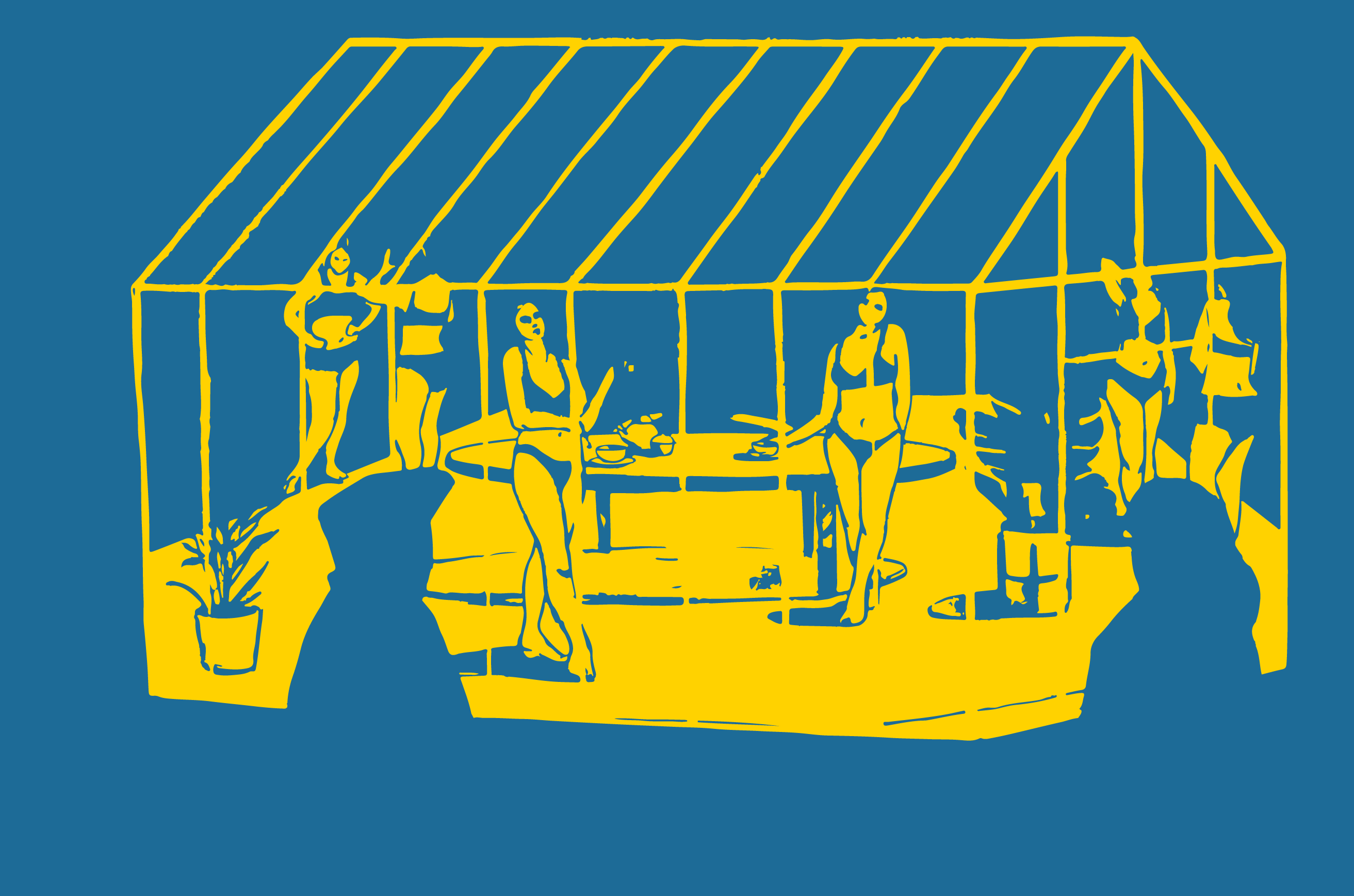;)
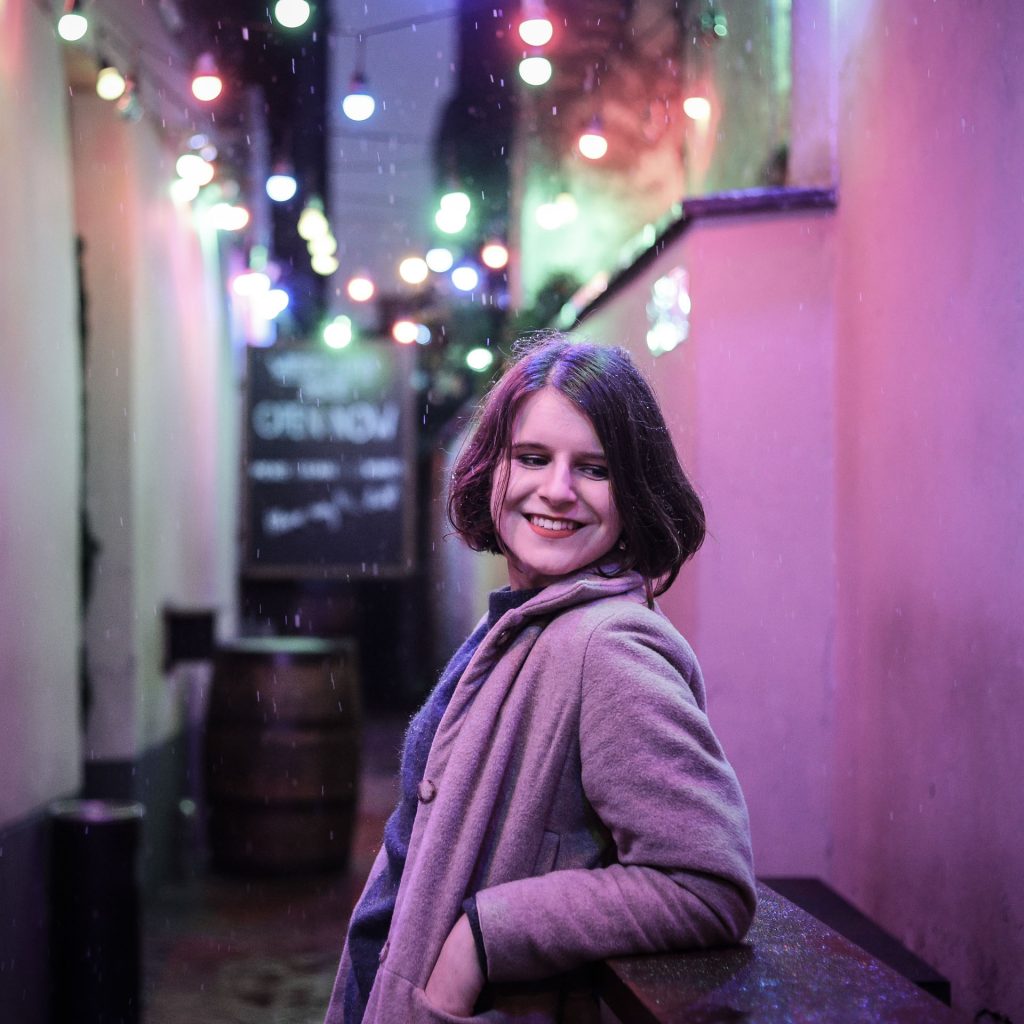
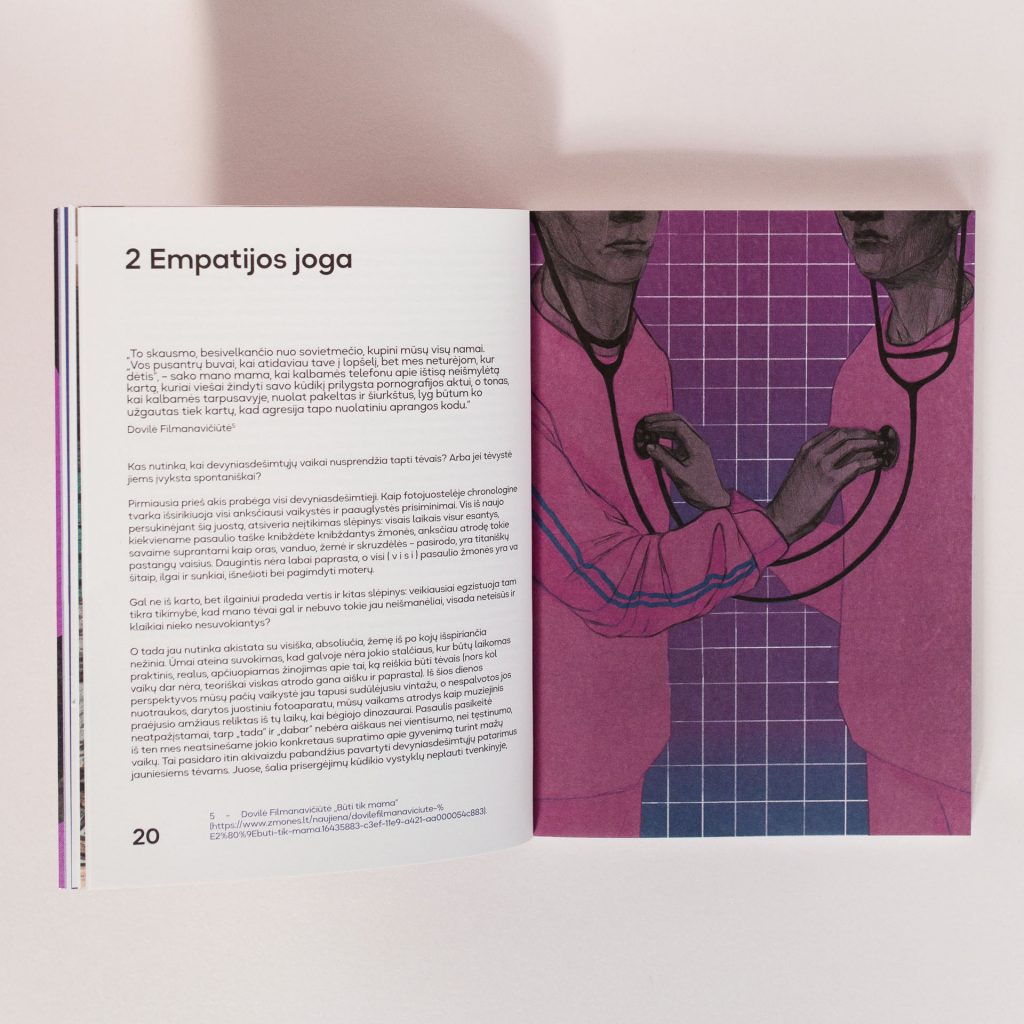
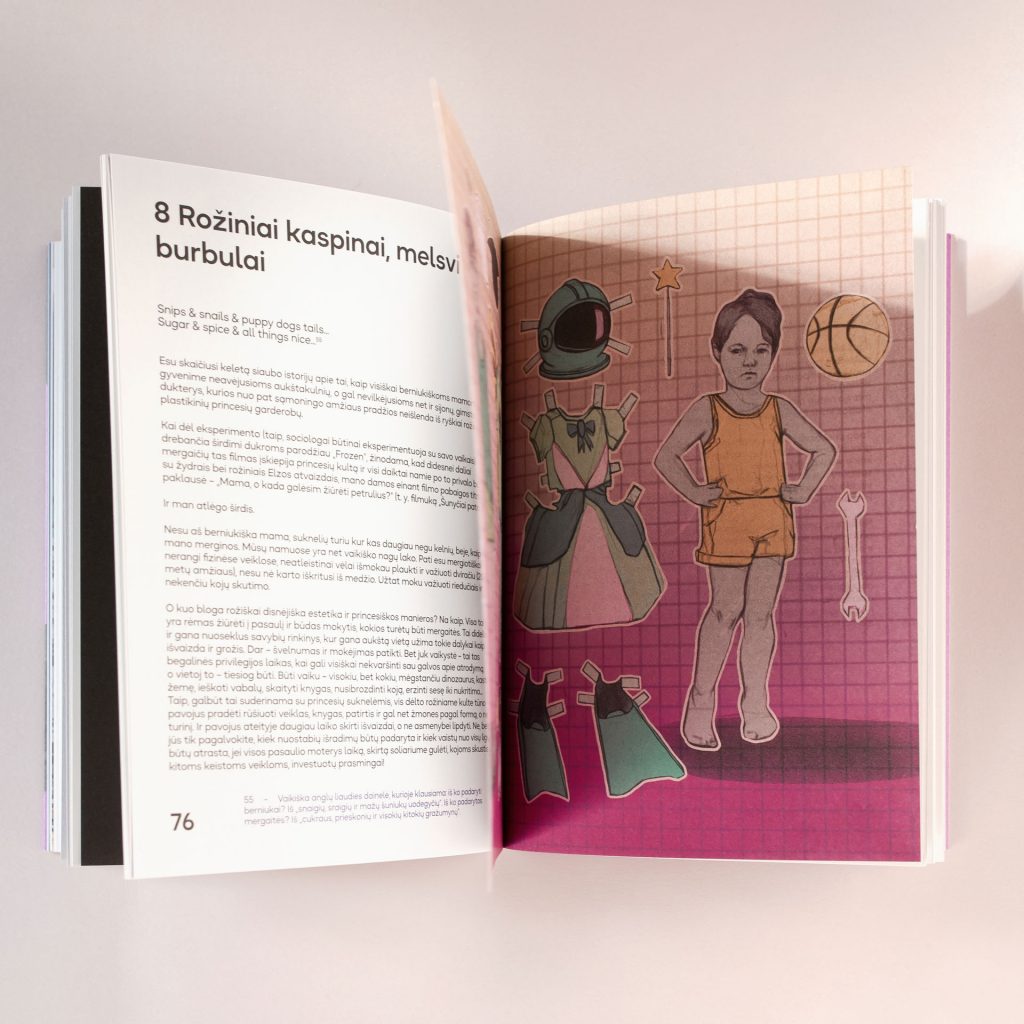
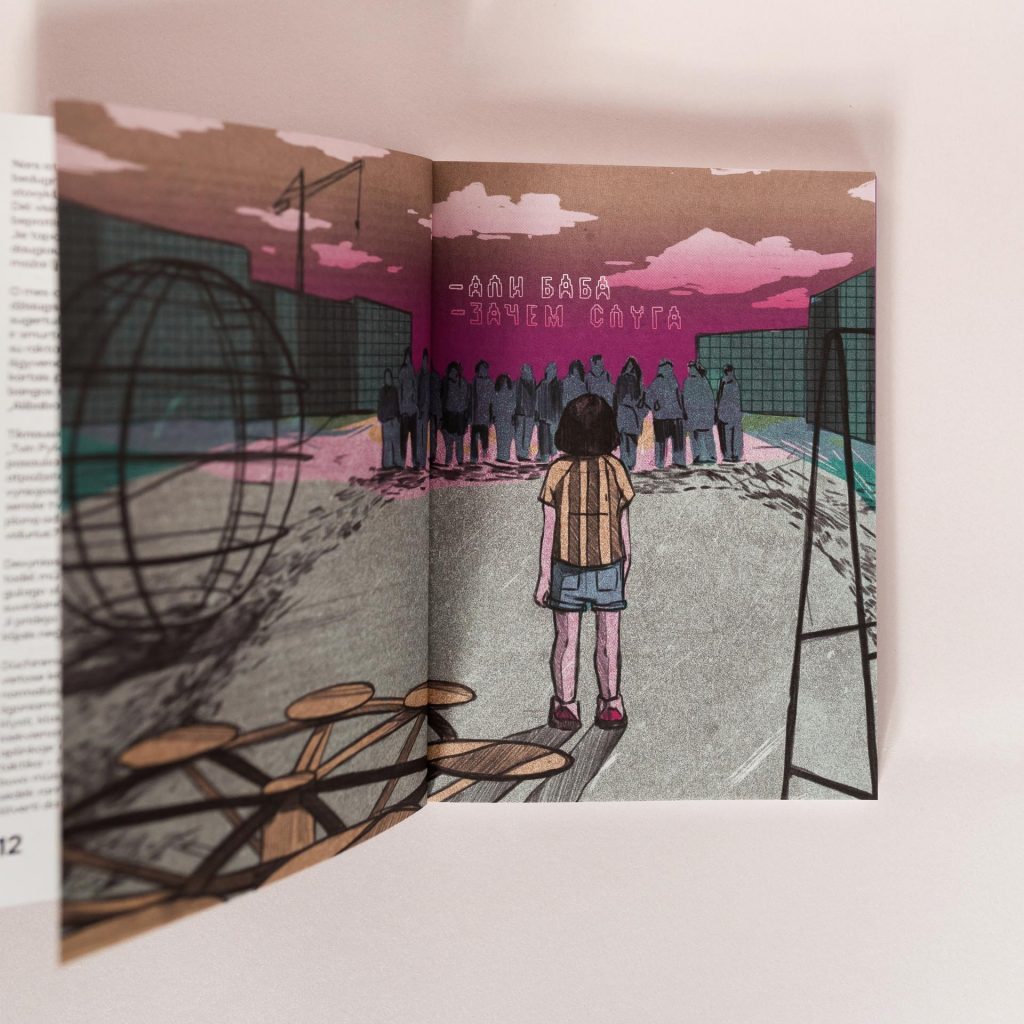
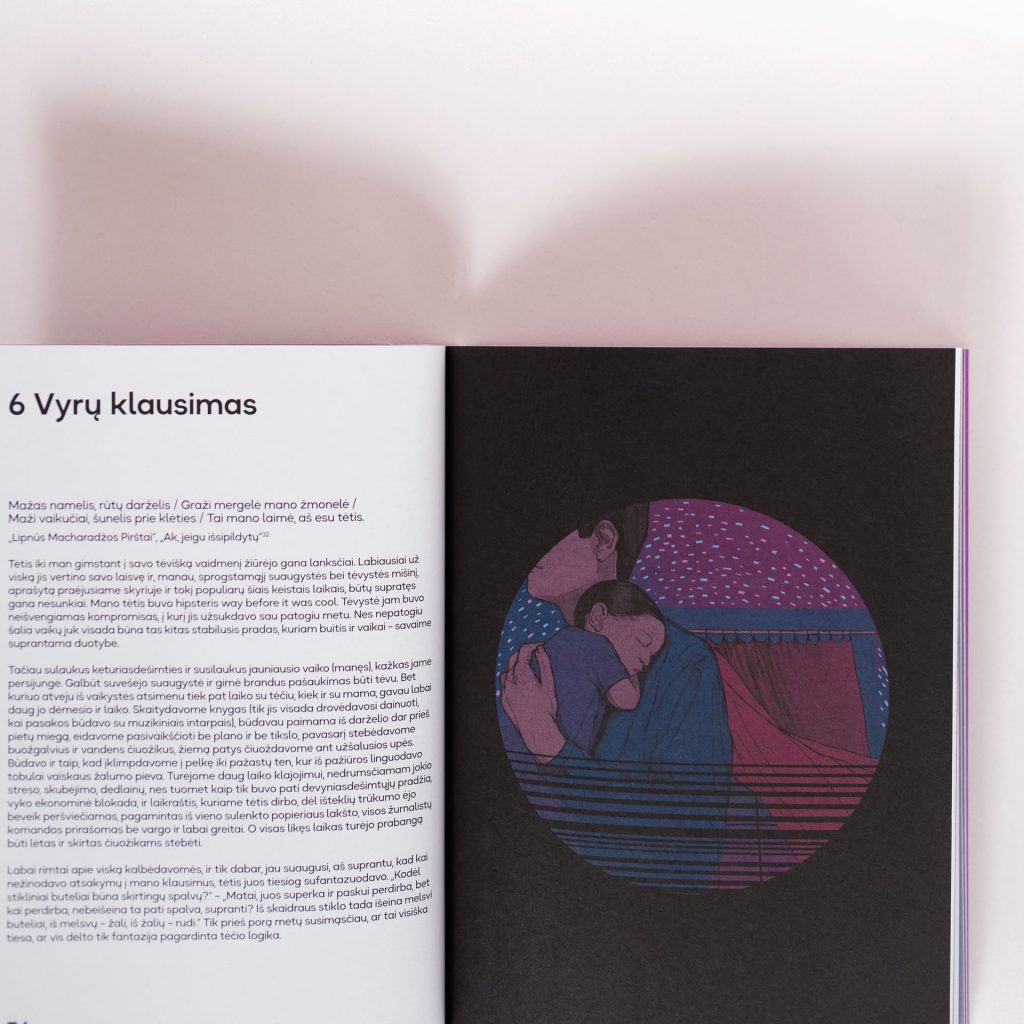
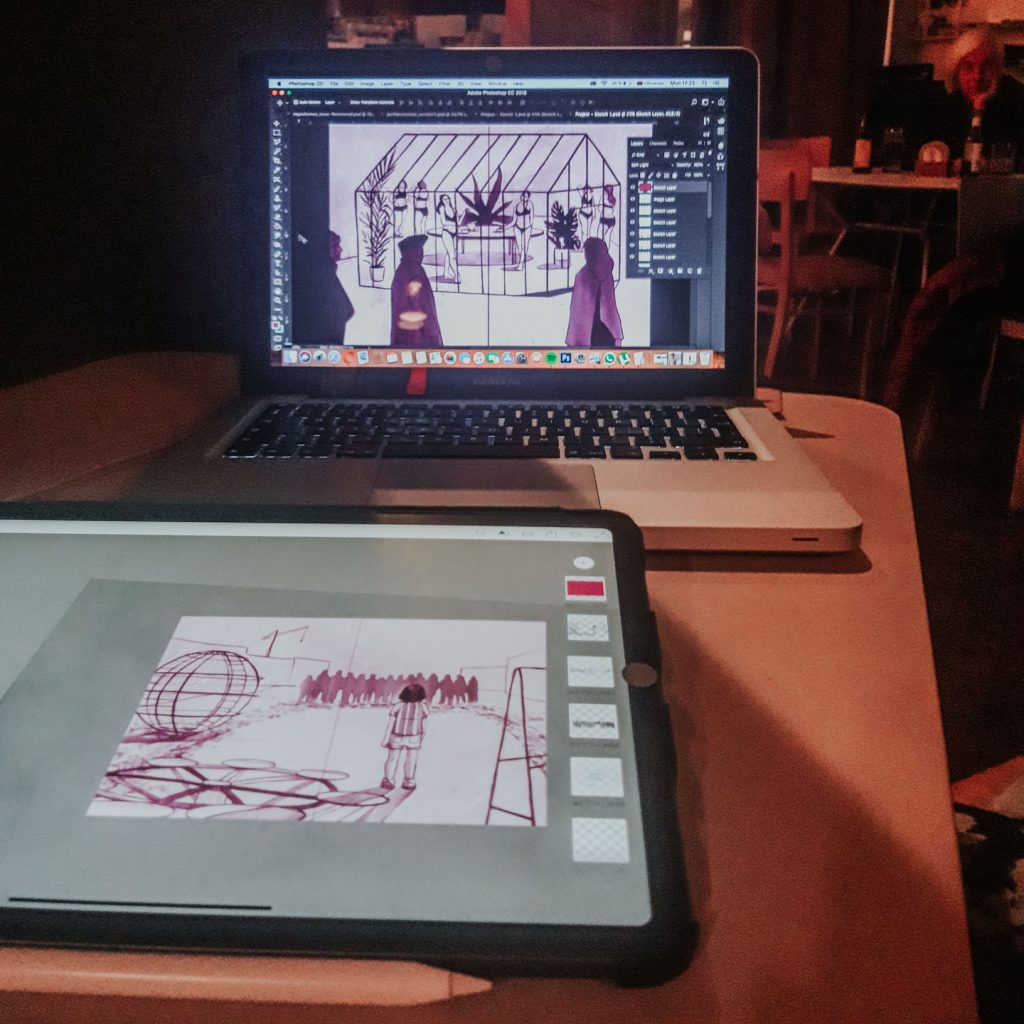
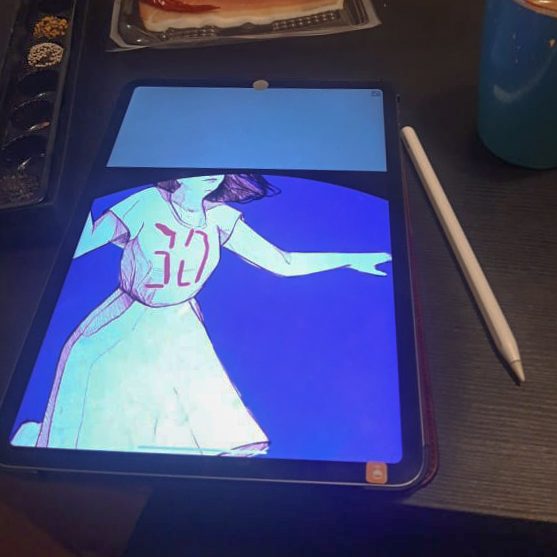
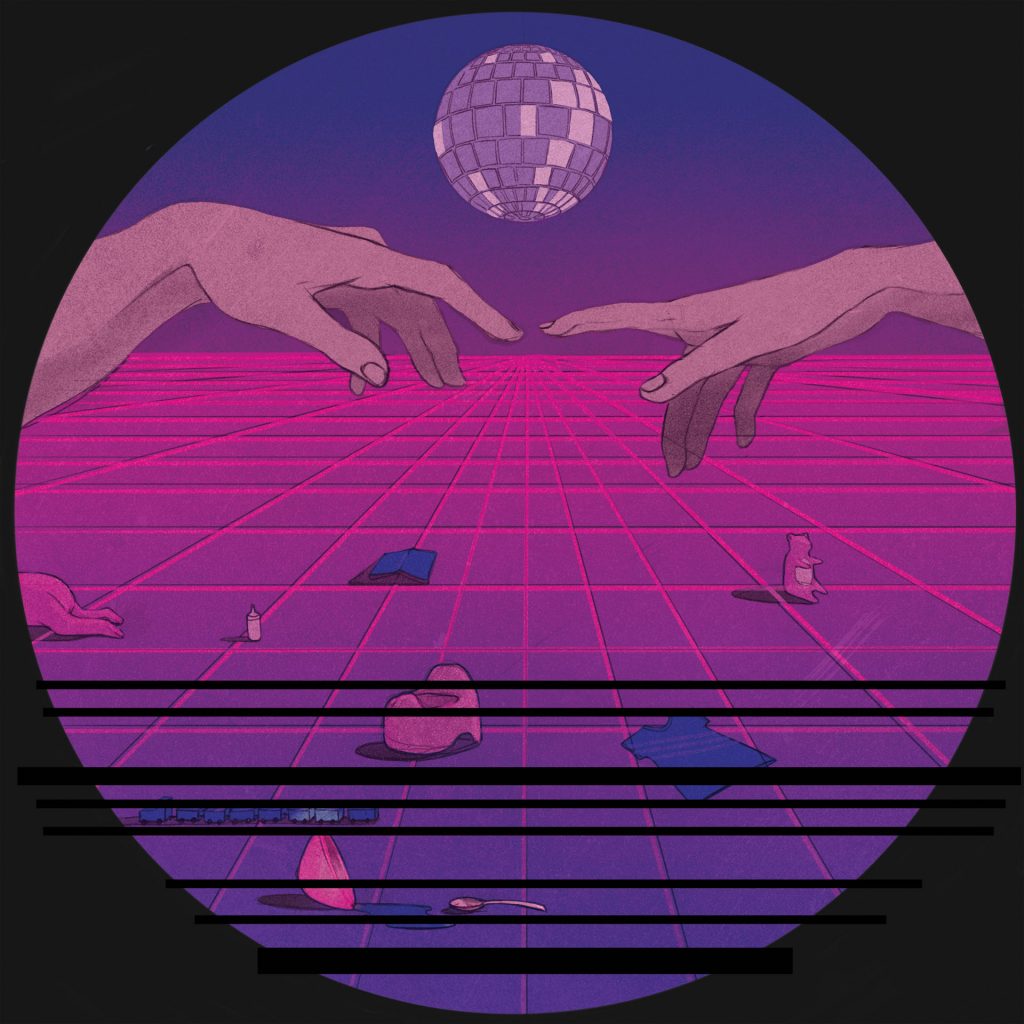

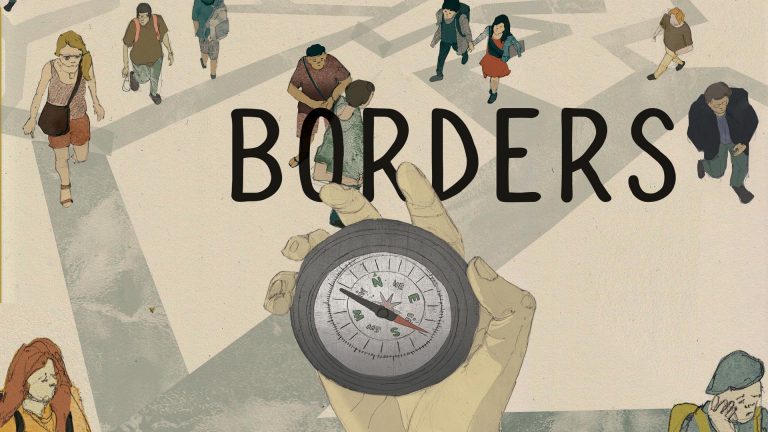
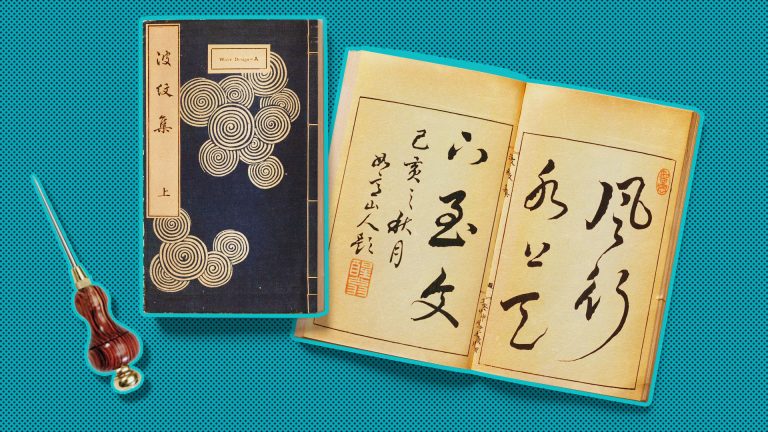
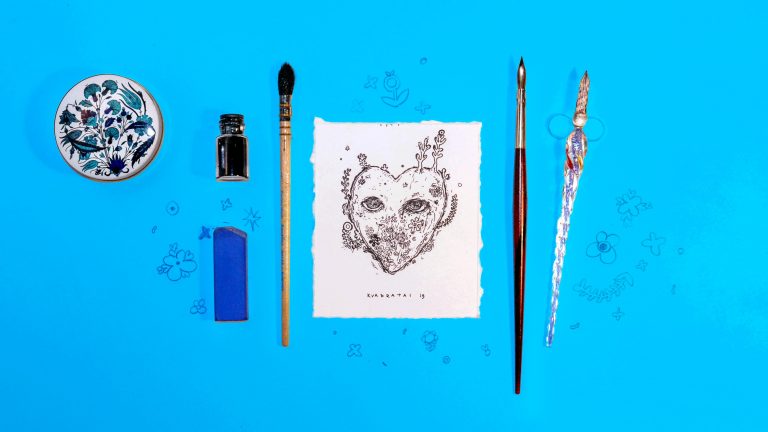
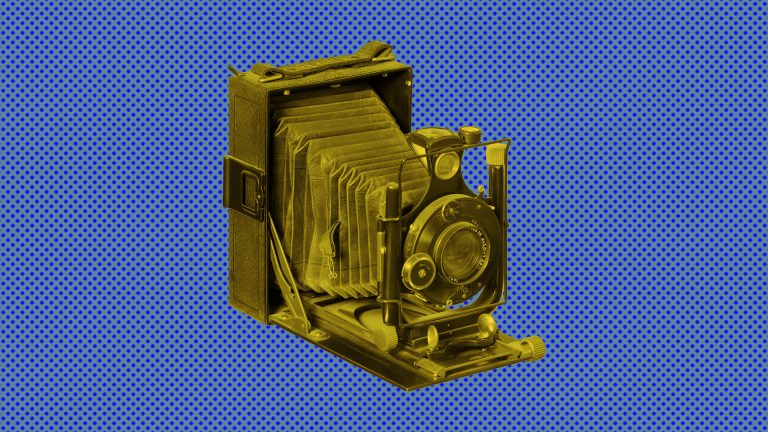
Comments